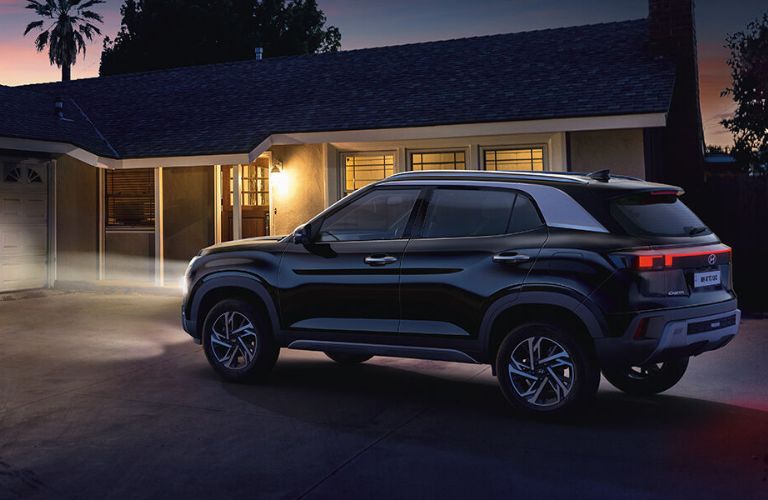Hyundai’s Answer to Tata and Maruti: The New Twin-Tank CNG Revolution
⏰ 3-minute Read
Hyundai is making headlines with its latest move in the competitive automotive market. After years of trailing behind industry leaders like Tata and Maruti in the CNG segment, the South Korean automaker is set to introduce a new twin-tank CNG setup. This innovative approach hinted at through the brand’s recent trademark filings for ‘Hy-CNG’ and ‘Hy-CNG Duo,’ could revolutionize its presence in the CNG space.
By addressing one of the most significant drawbacks of CNG vehicles—limited boot space—Hyundai is poised to offer a more practical and appealing solution for consumers, potentially reshaping the market dynamics.
What’s in This Blog?
Hyundai CNG Setup: Hyundai is planning to introduce a new twin-tank CNG setup, as indicated by their recent trademark filings for ‘Hy-CNG’ and ‘Hy-CNG Duo.’
Addressing Boot Space Issue: The new twin-tank CNG of Hyundai aims to resolve the common issue of limited boot space in CNG vehicles by using two smaller tanks placed underneath the boot floor.
Expansion of CNG Models: Hyundai twin-tank CNG setup is expected to be offered in popular models like the i20, Venue, Creta, and Verna, expanding the brand’s CNG portfolio.
Competition with Tata and Maruti: By adopting the twin-tank CNG technology, Hyundai aims to catch up with competitors like Tata Motors and Maruti, who have already implemented similar setups in their vehicles.
Impact on the CNG Market: The new Hyundai twin-tank CNG technology could significantly enhance the brand’s competitiveness in the rapidly growing CNG market, offering a more practical and appealing option for drivers.
The Rise of CNG Vehicles
Over the past decade, fuel prices have skyrocketed, pushing many drivers to seek more cost-effective alternatives. Compressed Natural Gas (CNG) is as a popular choice, particularly for fleet operators and cab aggregators. The lower running costs and reduced emissions make CNG vehicles an attractive option for those looking to balance affordability with environmental consciousness. In this rapidly growing market in India, Maruti has been the undisputed leader, followed by Tata Motors, which has also gained significant traction with its innovative twin-tank CNG setup.

Hyundai Strategy: New Twin-Tank CNG
Hyundai has filed two trademark applications—’Hy-CNG’ and ‘Hy-CNG Duo,’ signaling its entry into the twin-tank CNG arena. The new twin-tank CNG of Hyundai is expected to be a game-changer, addressing one of the most common complaints about CNG vehicles: limited boot space. Traditionally, CNG tanks occupy a significant portion of the trunk, leaving little room for luggage. However, the brand’s new twin-tank CNG setup is designed to free up more boot space, making it a more practical option for everyday users.
The new twin-tank CNG of Hyundai is likely to be introduced in models like the i20, Venue, Creta, and Verna. Currently, Hyundai offers a single-cylinder CNG kit in vehicles such as the Grand i10 Nios, Aura, and Exter. This twin-tank setup could significantly enhance the appeal of the brand’s CNG lineup, particularly for those who prioritize fuel efficiency and cargo space.
[Extra read: Revolutionizing Energy Efficiency: Exploring the Latest Advancements in Regenerative Braking Technology]
Why Twin-Tank CNG Matters
The concept of a twin-tank CNG setup isn’t entirely new. Tata Motors was the first to implement this technology in its Altroz model, followed by the Tiago, Tigor, and Punch. By placing two smaller CNG tanks underneath the boot floor, Tata successfully freed up more luggage space without compromising on the vehicle’s performance. Maruti has also jumped on the bandwagon, teasing an updated range of CNG vehicles expected to feature a similar twin-tank setup.
For Hyundai, the new twin-tank CNG represents an opportunity to catch up with its competitors. This technology will offer more boot space and enhance the overall driving experience. For premium models like the Creta and Verna, this could be a crucial differentiator, making them more appealing to customers who might otherwise have overlooked CNG options due to space constraints.

What to Expect Next
While Hyundai has yet to release concrete details about the new twin-tank CNG setup, the fact that the company has filed trademarks suggests that an official announcement could be on the horizon. If Hyundai successfully integrates this technology into its vehicles, it could significantly boost its presence in the CNG market. The new twin-tank CNG of Hyundai could be the breakthrough the company needs to compete more effectively with Tata and Maruti.
The Hyundai brand’s foray into the twin-tank CNG space is a promising development that could reshape the CNG vehicle landscape. By offering a solution to one of the most significant drawbacks of CNG vehicles—limited boot space—Hyundai is positioning itself as a strong contender in this growing market.
As we await more details, one thing is clear: the new twin-tank CNG of Hyundai is a step in the right direction, promising greater convenience and efficiency for CNG vehicle owners.
[Also read: A Comprehensive Guide to the Electrified Vehicles in India: Overview, Future, Diversity, and Challenges]

